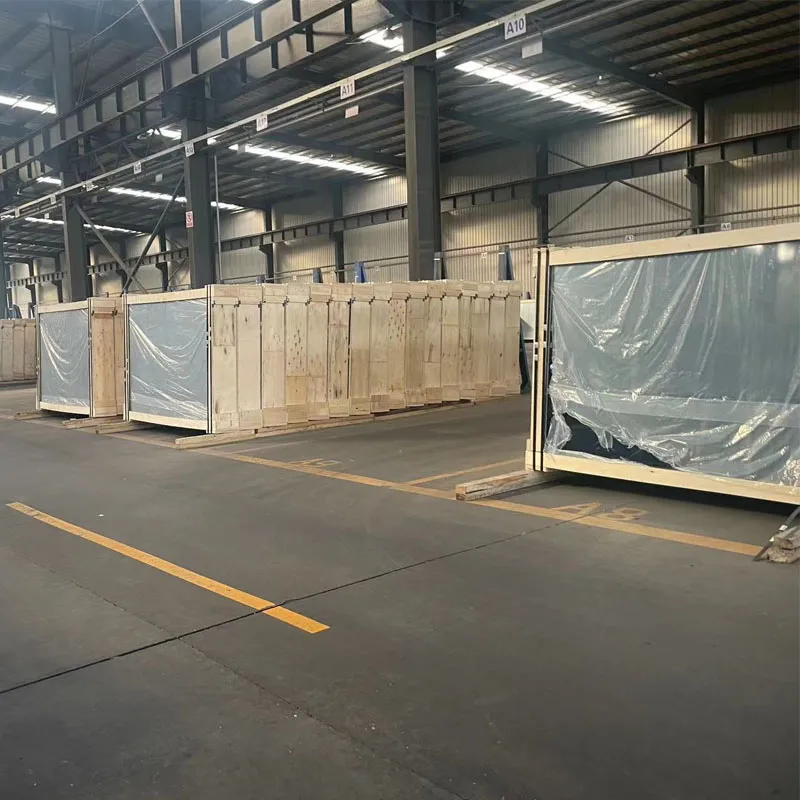Tempered Glass vs. Normal Glass A Comprehensive Comparison
When it comes to construction and design, glass plays a critical role in aesthetics and functionality. Two common types of glass used in various applications are tempered glass and normal (annealed) glass. While they may appear similar, the processes involved in their production, their strength, safety features, and applications highlight significant differences that can influence the choice of material for a given project.
Production Process
Normal glass, also known as annealed glass, is produced by slowly cooling molten glass to relieve internal stresses. This traditional method produces a consistent and uniform sheet of glass, which is relatively easy to work with but lacks the strength found in its tempered counterpart.
In contrast, tempered glass undergoes a specialized manufacturing process called tempering. After the glass is shaped, it is heated to temperatures of around 600°C (1,112°F) and then rapidly cooled. This thermal treatment creates compressive stresses on the surface and tensile stresses in the interior of the glass, significantly enhancing its strength and durability. This method causes tempered glass to be about five to six times stronger than normal glass of the same thickness.
Strength and Durability
The most notable difference between tempered glass and normal glass is strength. Due to its manufacturing process, tempered glass can withstand higher levels of impact and thermal stress. This makes it an ideal choice for applications where safety and structural integrity are critical, such as in shower doors, glass doors and tables, and building facades.
Normal glass, however, is more prone to breaking under stress. When it does break, it shatters into large, sharp shards that can cause injury. Tempered glass, on the other hand, breaks into small, blunt pieces, significantly reducing the risk of injury and making it safer for use in public spaces and residential projects alike.
tempered glass and normal glass
Safety Features
The safety features of tempered glass make it a preferred choice for environments where human safety is a concern. For instance, since tempered glass does not break easily and when it does, it shatters safely, it is commonly used in the automotive industry for car windows and windshields.
Normal glass lacks these safety benefits; its fragility and the nature of its breakage pose greater risks. For this reason, many building codes require tempered glass in certain applications, such as near swimming pools or in large panels where the risk of injury is higher.
Applications
The applications for tempered glass extend beyond just safety and strength. Its ability to withstand thermal stress makes it suitable for use in high-temperature environments such as fireplaces and ovens. It is also favored for its aesthetic qualities, allowing architects to design larger glass installations without compromising safety.
Normal glass finds its use in less demanding applications. It is often used for interior aesthetics, such as picture frames or decorative items, where safety and thermal stress are less of a concern.
Conclusion
In conclusion, while both tempered glass and normal glass serve vital roles in various applications, the choice between them depends on specific needs regarding safety, strength, and application. Tempered glass, with its enhanced durability and safety features, is increasingly favored in situations where performance is crucial, whereas normal glass remains suitable for less demanding contexts. Understanding these differences can aid architects, builders, and consumers in making informed decisions about the glass best suited for their needs.
 Afrikaans
Afrikaans  Albanian
Albanian  Amharic
Amharic  Arabic
Arabic  Armenian
Armenian  Azerbaijani
Azerbaijani  Basque
Basque  Belarusian
Belarusian  Bengali
Bengali  Bosnian
Bosnian  Bulgarian
Bulgarian  Catalan
Catalan  Cebuano
Cebuano  Corsican
Corsican  Croatian
Croatian  Czech
Czech  Danish
Danish  Dutch
Dutch  English
English  Esperanto
Esperanto  Estonian
Estonian  Finnish
Finnish  French
French  Frisian
Frisian  Galician
Galician  Georgian
Georgian  German
German  Greek
Greek  Gujarati
Gujarati  Haitian Creole
Haitian Creole  hausa
hausa  hawaiian
hawaiian  Hebrew
Hebrew  Hindi
Hindi  Miao
Miao  Hungarian
Hungarian  Icelandic
Icelandic  igbo
igbo  Indonesian
Indonesian  irish
irish  Italian
Italian  Japanese
Japanese  Javanese
Javanese  Kannada
Kannada  kazakh
kazakh  Khmer
Khmer  Rwandese
Rwandese  Korean
Korean  Kurdish
Kurdish  Kyrgyz
Kyrgyz  Lao
Lao  Latin
Latin  Latvian
Latvian  Lithuanian
Lithuanian  Luxembourgish
Luxembourgish  Macedonian
Macedonian  Malgashi
Malgashi  Malay
Malay  Malayalam
Malayalam  Maltese
Maltese  Maori
Maori  Marathi
Marathi  Mongolian
Mongolian  Myanmar
Myanmar  Nepali
Nepali  Norwegian
Norwegian  Norwegian
Norwegian  Occitan
Occitan  Pashto
Pashto  Persian
Persian  Polish
Polish  Portuguese
Portuguese  Punjabi
Punjabi  Romanian
Romanian  Russian
Russian  Samoan
Samoan  Scottish Gaelic
Scottish Gaelic  Serbian
Serbian  Sesotho
Sesotho  Shona
Shona  Sindhi
Sindhi  Sinhala
Sinhala  Slovak
Slovak  Slovenian
Slovenian  Somali
Somali  Spanish
Spanish  Sundanese
Sundanese  Swahili
Swahili  Swedish
Swedish  Tagalog
Tagalog  Tajik
Tajik  Tamil
Tamil  Tatar
Tatar  Telugu
Telugu  Thai
Thai  Turkish
Turkish  Turkmen
Turkmen  Ukrainian
Ukrainian  Urdu
Urdu  Uighur
Uighur  Uzbek
Uzbek  Vietnamese
Vietnamese  Welsh
Welsh  Bantu
Bantu  Yiddish
Yiddish  Yoruba
Yoruba  Zulu
Zulu 

